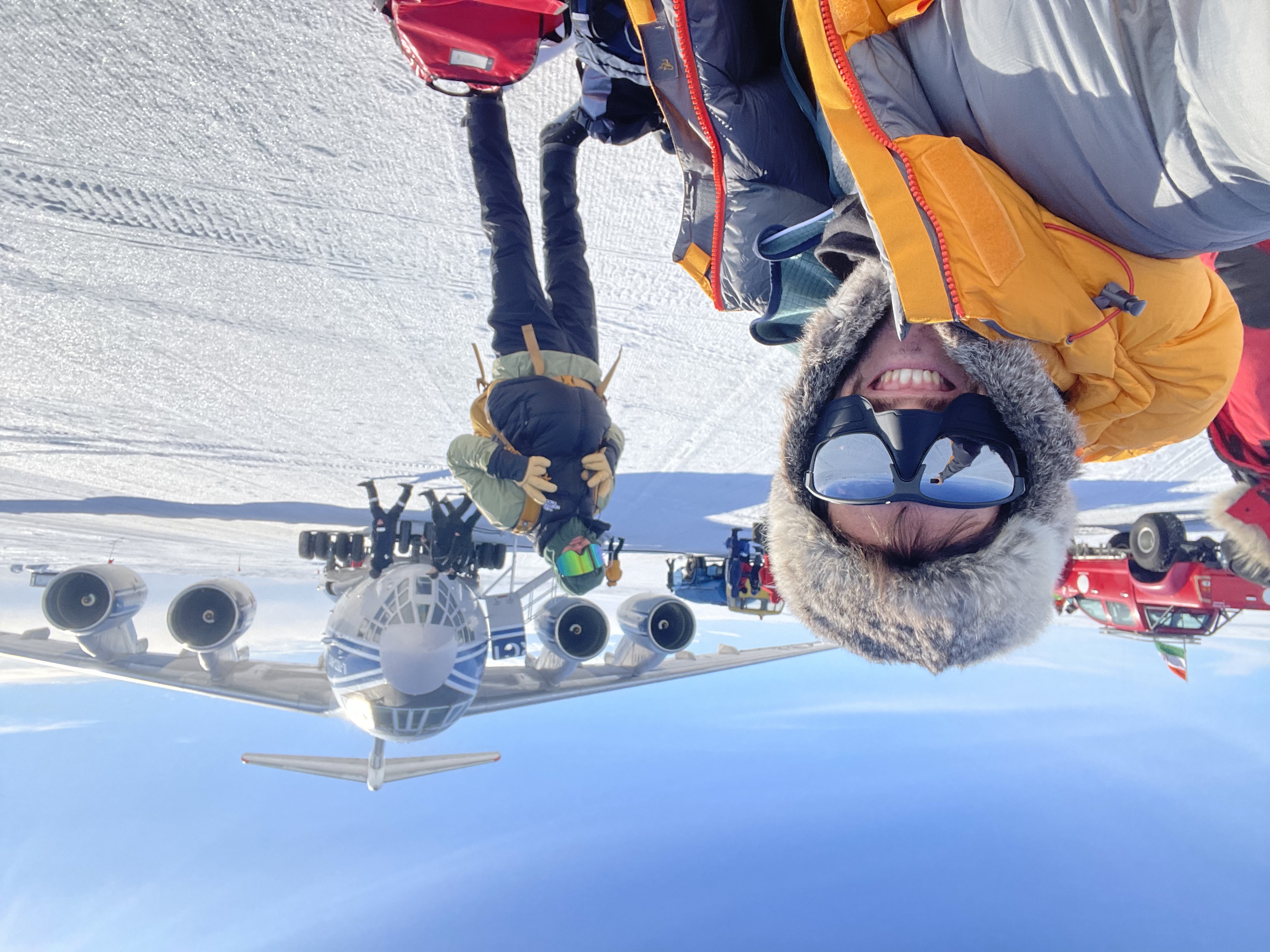3rd semester
DC1 ALESSANDRO CUZZERI OCTOBER 23 - MARCH 24
Month 13: (April 2024) – New experimental plan for the main research hypothesis (alpine air metagenomics).
Month 14: (May 2024) – Fresh re-start of analyses of cryoconite amplicon data. Planned a collaboration with DC4/Aarhus University in the context of pesticide-microbiology analysis.
Month 15: (June 2024) – Biostatistics GLMM (Bayesian/TMB) implementation in own analyses. Presentation of the project to the University Doctoral Network on Alpine Biology and Global Change
Month 16: (July 2024) – Literature research, biostatistical analyses.
Month 17: (August 2024) – Sampling campaign at Forni Glacier jointly with DC4. Analysis of Illumina data from Antarctic settings (Lake Untersee). Preparations for Lake Untersee 2024 Scientific Expedition.
Month 18: (September 2024) – Preparations for Lake Untersee 2024 Scientific Expedition. Literature research, biostatistical analyses.
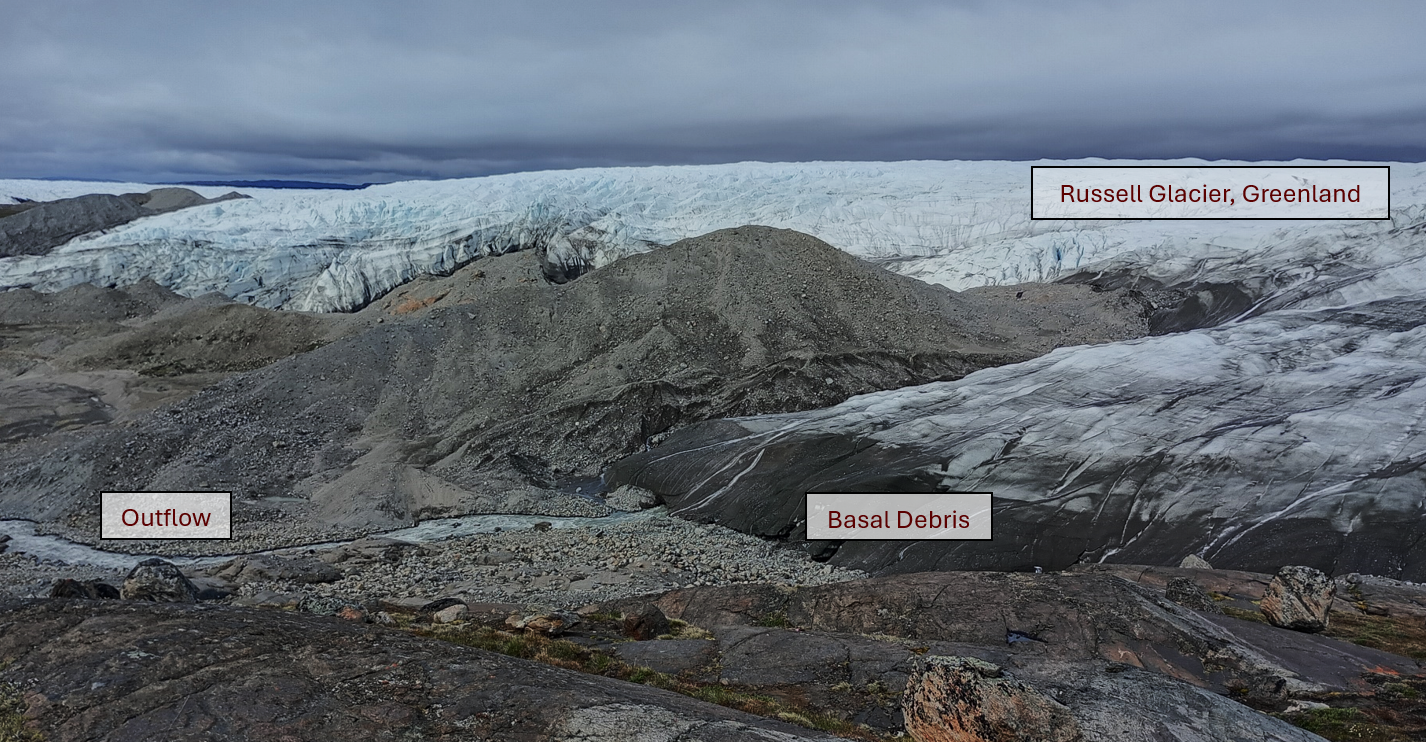
DC6 Klara Köhler MAY 24 - OCTOBER 24
Month 13: In May 2024, I spent a lot of time preparing for the fieldwork, i.e. preparing and packing the scientific equipment and meeting with the team to plan our work in the field. I also participated in an AI workshop for academic research and writing at our department and joined the first planning meetings for fieldwork in 2025.
Month 14: In June 2024, I spent most days in the lab conducting nutrient analysis for samples for my first paper. The samples were incubated sediment-water samples from 2022, taken in Greenland, and I looked into the nutrient concentration dissolved in the water and bound to the sediment. I also completed the PhD course ‘Science Teaching’ at our campus in Aarhus.
Month 15: July 2024 was filled with our field work in Kangerlussuaq, Greenland, where I stayed for three weeks. I took basal debris (debris transported with the ice, melting at the margin of the glacier out of an almost black band on the glacier (see photo)), proglacial sediment, rock and water samples at the margin of the Russell Glacier close to Kangerlussuaq. Further, I had the chance to take additional water samples along the river and the Kangerlussuaq Fjord.
Month 16: In August 2024, we organised the transport of the frozen and cooled samples back to Denmark. I also started analysing the data from the lab session in June 2024, attended department meetings and took over the chair of our Equality and Diversity Committee for the next ~6 months.
Month 17: In September 2024, I wrote my progress report for our PhD school. In parallel, I started writing my first paper and started reviewing the written parts with the co-authors. For three days in September, I participated in the PhD course ‘Gender in Science’ at Malmö University, where I prepared a presentation and a written report in addition to the course days. At the end of September, I helped organise our PhD Bundle Meeting, a meeting for all PhD students in our department.
Month 18: In October 2026, I finalised the progress report for the PhD school. One week in October, our IceBio network meeting took place in Copenhagen, where we learnt about writing skills, outreach and advisory work. At the end of October, I attended the Nordic Branch Meeting, an annual conference of the Scandinavian branch of the International Glaciological Society (IGS).
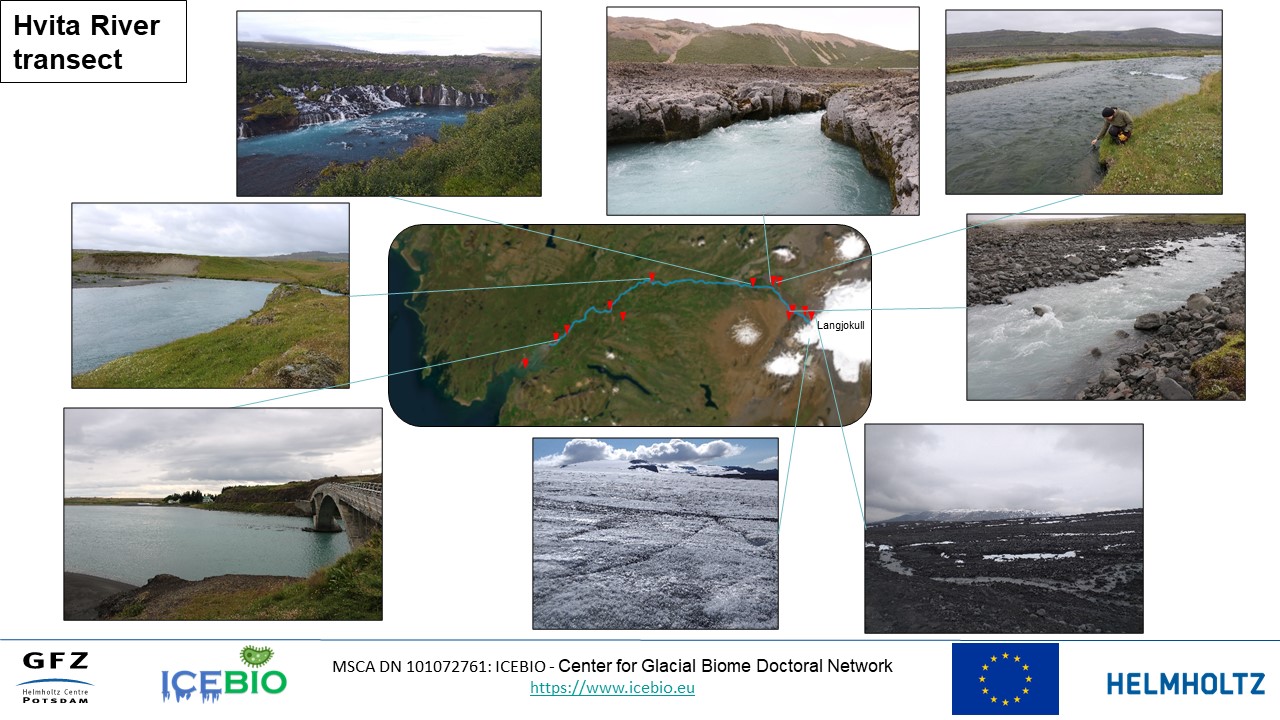
DC7 MARCO AJMAR AUG 24 - OCTOBER 24
Month 13: In August, I tested dissolved silica, pH, turbidity, conductivity and dissolved oxygen sensors in Potsdam lake. This was followed by two weeks of fieldwork in Iceland sampling two different glaciers and a glacier fed river (twice). In addition to that, the aforementioned sensors were deployed at three different locations along the river for 24 hours each time.
Month 14: In September, I processed and organised samples from my Iceland fieldwork. I extracted DOM and received training on ICP-OES analysis. I also prepared and sent samples to University of Leeds for ICP-MS analysis.
Month 15: October focused on analysis of DOC and sensor data. I prepared and analysed samples for oxygen isotopes and gave a presentation about my research project in a section meeting. Finally, I participated in the third IceBio meeting in Copenhagen.
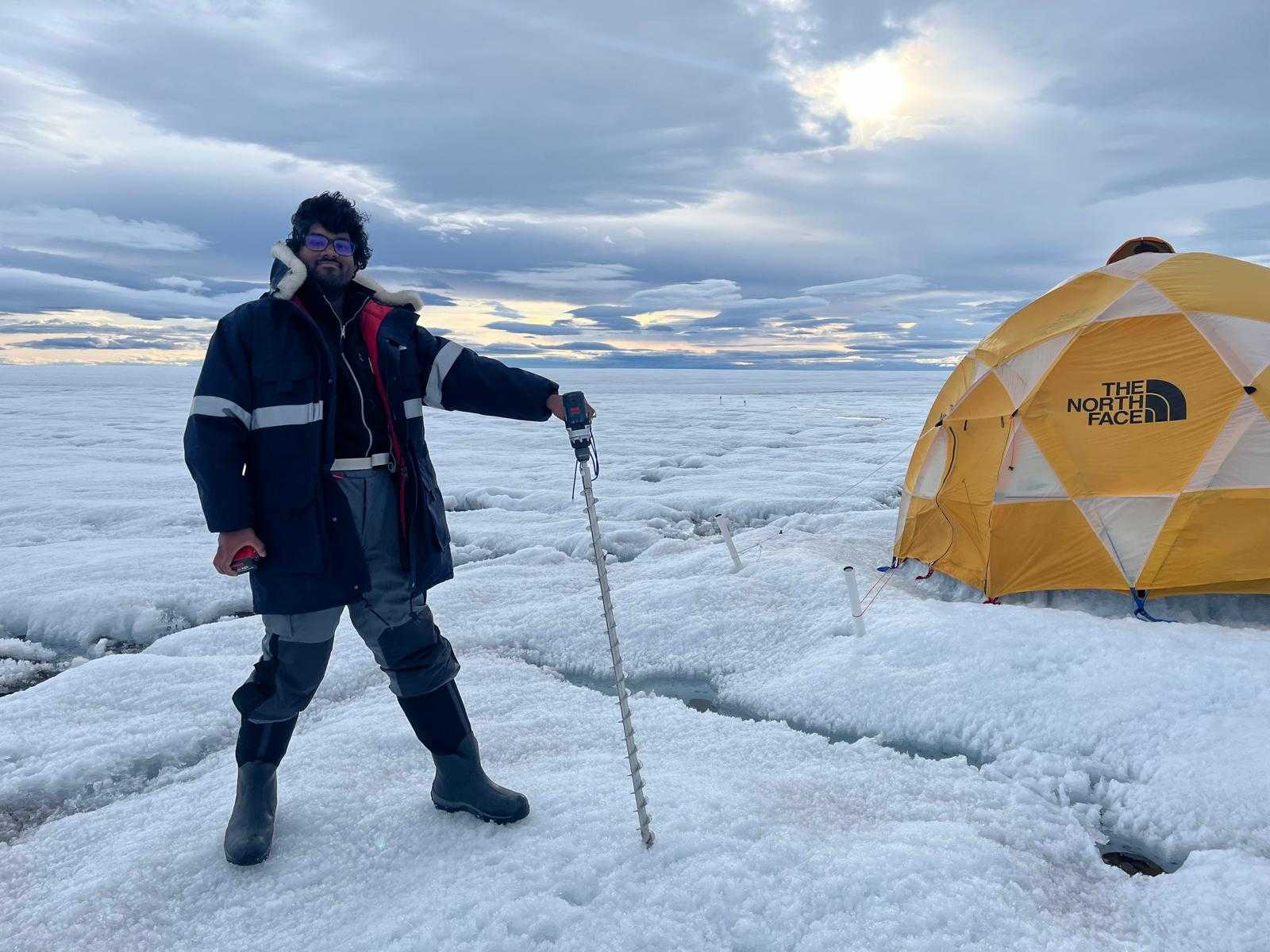
DC5 ANIRBAN MAJUMDER JULY 24 - DECEMBER 24
Month 13 (July 24): This month primarily focused on fieldwork in Kangerlussuaq, Greenland, which started on July 12 2024. Over a two-week period, I conducted sample collection from the Greenland Ice Sheet.
Month 14 (Aug 2024): The fieldwork was completed on August 11 2024, after which I began preparing my one-year transfer or mid-term report, marking the completion of the first year of my PhD.
Month 15 (Sept 2024): This month was primarily dedicated to preparing for my PhD transfer day. Also, I worked on my first paper and shared it with the co-authors for their feedback and comments.
Month 16 (Oct 2024): At the start of the month, on October 1st, I presented my one-year PhD transfer report. Following that I attended a network meeting of IceBio held in Copenhagen, Denmark. The program was structured into several components: 1) Scientific Writing Skills, 2) Communication with the Non-Academic World, and 3) Preparation of Science-Based Policy.
Month 17 (Nov 2024): This month was focused on lab work, during which I analyzed samples using mass spectrometry in collaboration with our partners and obtained crucial data for my PhD research. Additionally, I began preparing the documentation and logistics for the upcoming Svalbard 2025 fieldwork. I also received feedback on my first paper and worked on incorporating the suggested revisions. In the final week of the month, I initiated DNA extraction from various fieldwork samples.
Month 18 (Dec 2024): I continued DNA extraction in the lab while simultaneously preparing for the Svalbard fieldwork. Towards the end of the month, I received the Greenland 2024 fieldwork samples, which are scheduled for
processing in the upcoming months.
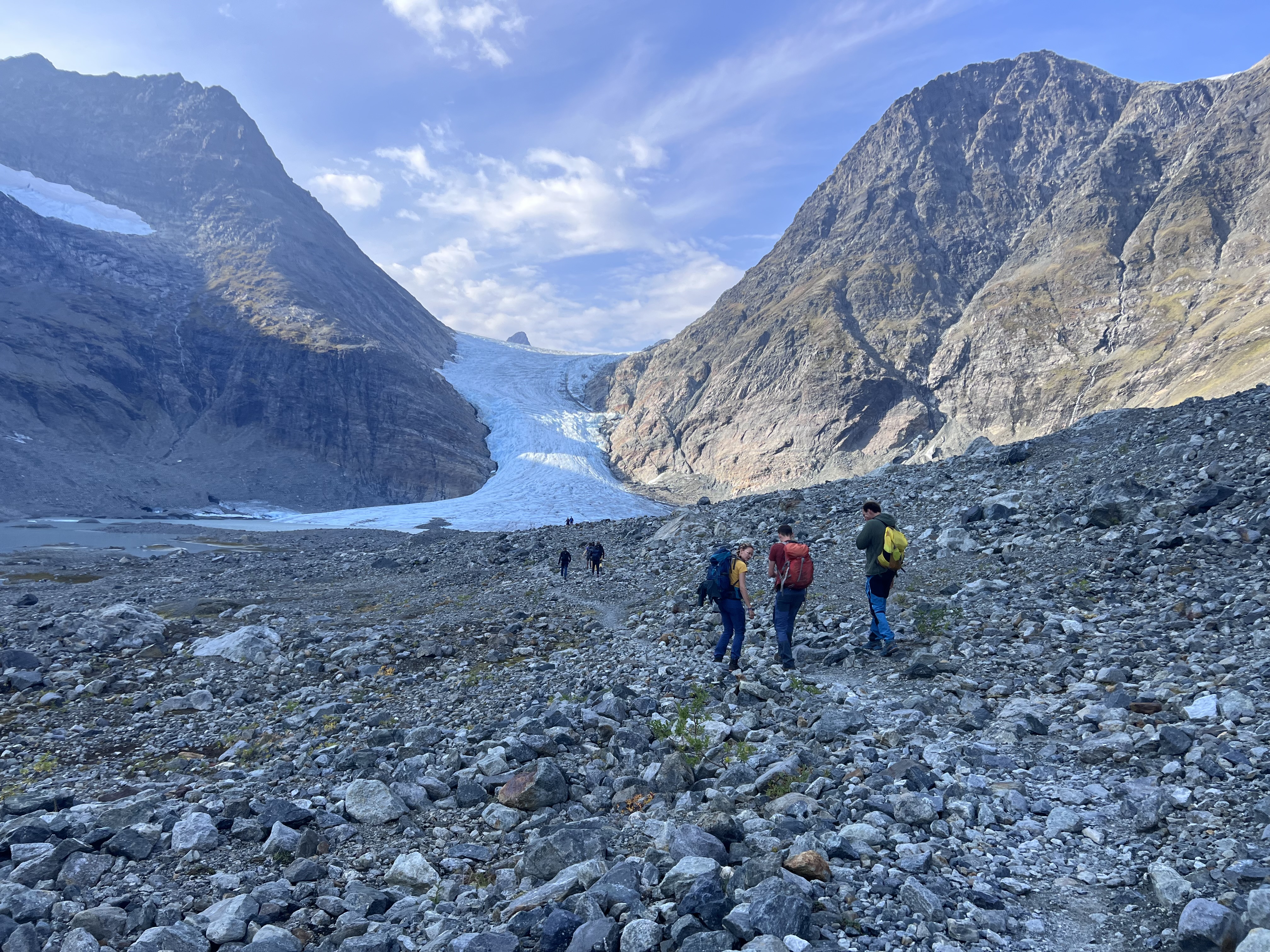
DC8 SILJE WAALER AUGUST 24 - JANUARY 25
Month 13 (Aug. 24): During August the last field campaign was finished in Kongsfjorden with the second fjord transect. Samples for methylmercury and total mercury were shipped to collaborators in Trondheim (NTNU). During this month I also supported the field work of Postdoc. Gabby Kleber (UNIS/UiT), in Van Mijenfjorden, Svalbard doing both marine and terrestrial sampling.
Month 14: In September the iC3 Field School pre-workshop and the following field campaign were conducted in the Lyngen Alps and Storfjorden. Here the goal was to gain knowledge on a broad variety of sampling techniques used in terrestrial and marine sampling. The aim was to capture the glacial signal in the ice to ocean continuum. The course ended with a written report on a chosen topic. I chose to focus on how deglaciation affects the export of silica to downstream systems and how that interferes with phytoplankton community composition. The experiences gained through this course will be useful when analysing the data collected in Kongsfjorden this summer.
Month 15: October was spent mainly on a mandatory philosophy and ethics course provided by UiT. Here various philosophical discussions were done in smaller interdisciplinary groups, which provided great insights into the perspectives but also all the biases all humans contain. Moreover, two presentations on philosophical topics and how our own research project relates to ethics were done. A final essay on a chosen philosophical question was conducted. In October the third ICEBIO gathering was happening in Copenhagen, Denmark, at Aarhus University at Emdrup. Here several presentations were done and the outline for the first paper was discussed among DCs and PIs. Moreover, the week contained several seminars on communication presented by a broad variety of organisations and institutions.
Month 16: In November the two reports associated with the iC3 Field School, and the Philosophy and Ethics course were finished. Moreover, two outreach presentations were conducted. One presentation was related to the Science Days in Tromsø (10min) and was targeting how climate impacts our health. I chose to talk about glacial flour in general and how some glacial flour can contain toxic trace metals that can potentially impact the health of humans and wildlife. The second presentation was related to Inspiration Days, which is a part of Arctic Frontiers’ Science for Schools program aiming to inspire school children to do science (45min). During this presentation I told the audience how I ended up in science, what I am studying and why I enjoy my life as a PhD student. Moreover, in November I managed to get a blogpost published in EGU’s CryoAdventures Blog on my first glacial field work at the Sulitjelma/Salajekna glaciers.
Month 17: During December lose ends before Christmas break was tied up with the finalization of my upcoming visits to NTNU, Trondheim and BAS, Cambridge. Moreover, a meeting with our collaborators of CIIMAR was conducted were the possibilities for metagenomic analyses of samples from Kongsfjorden were discussed. December was also spent on writing my first deliverable for ICEBIO in collaboration with Klara Kohler and Kara Sampsell on the topic of glaciers and glacial flours ability to fertilize downstream ecosystems. In this period, I also contributed to a policy brief of glacial flour and a paper for Frontiers - Young Minds.
Month 18: In January 2025 the visit to NTNU was done with the aim of analysing our total mercury and particulate mercury samples collected in Kongsfjorden 2024 in collaboration with Postdoc. Sarah Tingey, Postdoc. Fanny Cusset and Postdoc. Stephen Kohler. I also attended the Arctic Frontiers conference in this period. The last part of January was spent on getting ready for my visit to BAS in February.
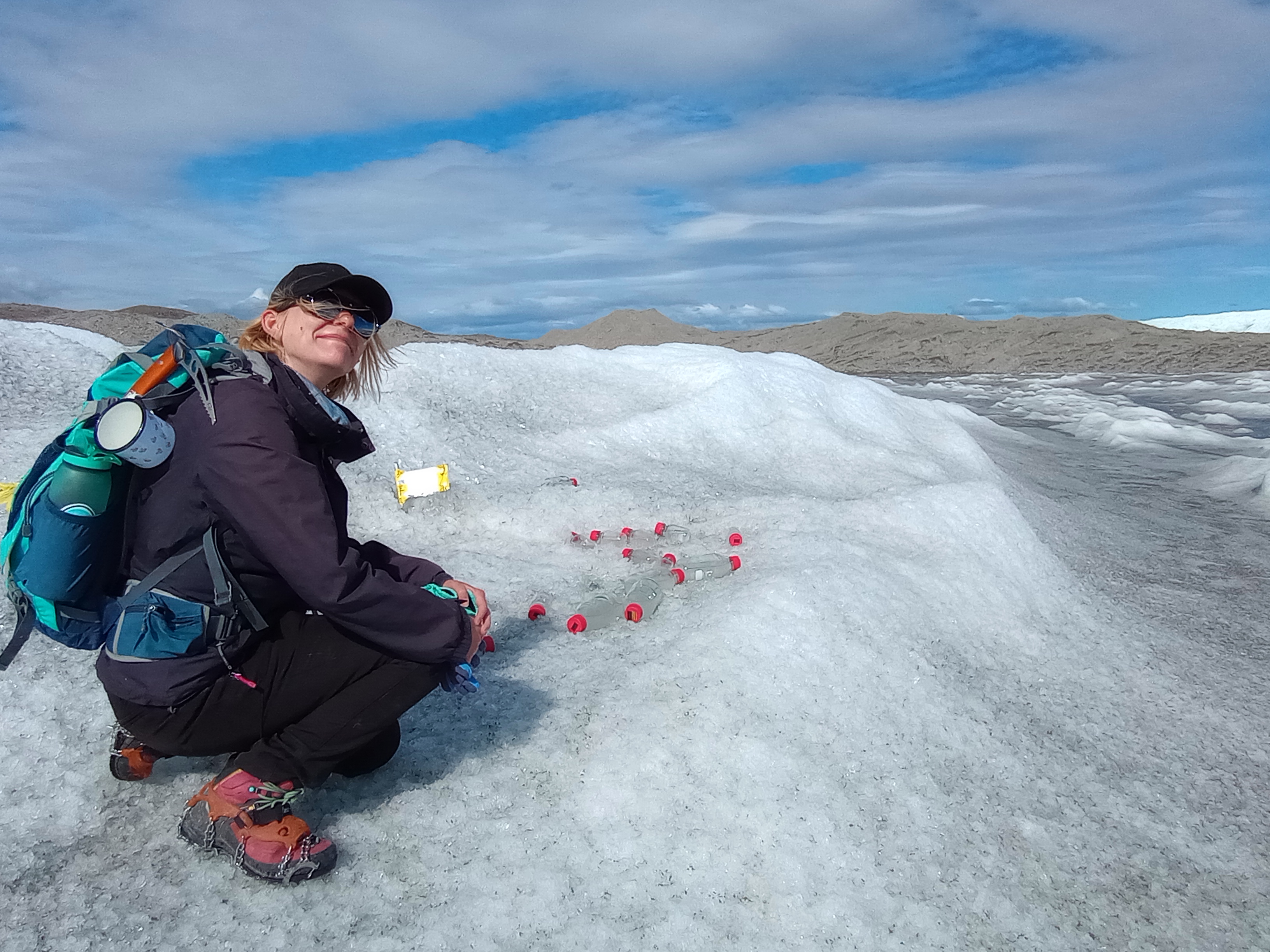
DC8 ANNIKA MORISCHE AUGUST 24 - JANUARY 25
Month 13 (Aug. 24): Debriefing of the fieldwork, including unpacking, organizing, and cataloguing the collected samples. A revision of the sample processing strategy was undertaken to optimize metabolome extraction workflows. This phase also involved preliminary quality control checks on the samples and refinement of experimental protocols to ensure robust data acquisition in the upcoming months.
Month 14: Initiation of mass spectrometry imaging (MSI) research with a focus on single-cell process imaging and its integration into the 13C-incubation experiments. A literature review was conducted to explore cutting-edge MS imaging techniques capable of resolving metabolic activity at the single-cell level. The aim was to evaluate how these technologies could be employed to reveal autotrophic metabolic processes and spatial metabolite distributions in ice algae.
Month 15: Participation in the ICEBIO network event, which included specialized training in science communication through the "Communication Toolkit and Policy Advice" workshop. This was followed by the preparation of a first conference poster presenting initial findings on the metabolic stress response of glacier microbiological communities.
Month 16: Attendance at the IGS Nordic Branch meeting (Conference) in Iceland, where the first research poster was presented, showcasing data on glacial communities’ metabolic stress response. Constructive feedback from conference attendees was integrated into the first manuscript draft, improving data interpretation and contextualization. Additionally, networking with experts in glaciology and biogeochemistry provided valuable insights into complementary methodologies.
Month 17: Secondment at the „Helmholtz-Zentrum für Geoforschung (GFZ)“. Initial test extractions of fieldwork samples were conducted, focusing on optimizing metabolite recovery. Experiments to assess isotopic accuracy of GC-MS instruments were initiated, alongside extraction of test samples for ensuring extraction efficiency of isotope-labelled metabolites. Training in bi-phase metabolomic and lipidomic extraction was undertaken to refine protocols for future large-scale sample analyses. Data processing for stress response metabolic analysis began, with extensive testing of various mass spectrometry software, including MSDial, MZmine, and MetaboAnalyst.
Month 18: Finalization of data visualization strategies and mid-term report preparation. Field work planning targeting particulate organic matter (POM) and intracellular metabolites composition in the Arctic Ocean. Sampling efforts aim to resolve basal glacier metabolic processes and the chemical diversity underpinning microbial survival in extreme environments.
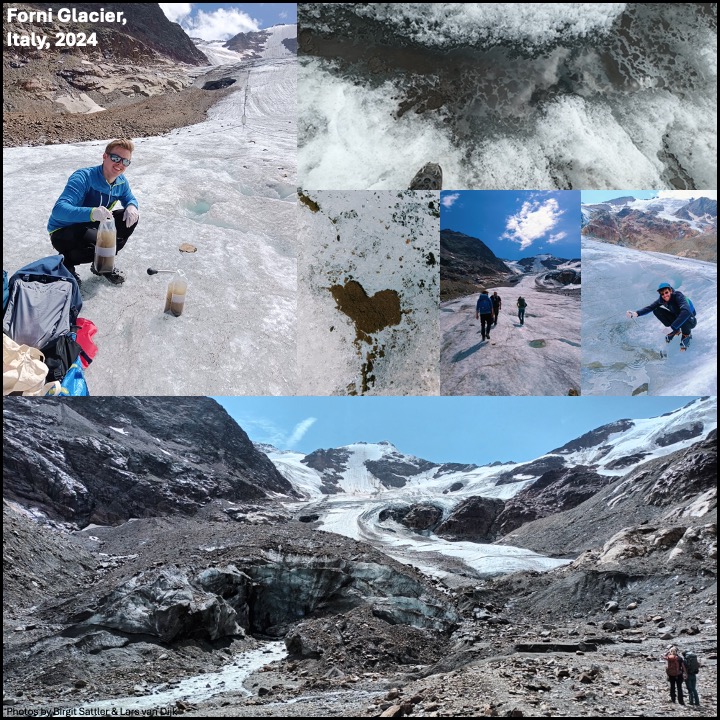
DC4 LARS VAN DIJK AUGUST 24 - JANUARY 25
Month 13 (Aug. 24): Literature review, data analysis, and a sampling campaign at the Forni Glacier in Italy, conducted together with DC1 as part of a collaborative project investigating pesticide microbial degradation processes and microbial responses to pesticides in cryoconite communities, through a comparative analysis with cryoconite from the Greenland Ice Sheet.
Month 14: Data analysis and abstract/poster preparation for the first project on a comparative analysis of the microbial community in cryoconite and dispersed cryoconite, using both culture-independent and culture-dependent approaches. Additionally, preparations were made for the next collaborative project with DC1 on pesticide degradation by cryoconite microbial communities
Month 15: Presented my research through a poster presentation during an external panel visit evaluating the research quality of our department. Attended the third ICEBIO network event in Copenhagen, Denmark, which included two courses: 'Communication Toolkit' and 'Science-Based Policy Advice'.
Month 16: Presented my research at the Danish Microbiological Society Congress in Copenhagen, pitched my research at a MicroNet Microbiology PhD Symposium in Copenhagen sponsored by the American Society for Microbiology, drafted the manuscript for the first project, and initiated a long-term incubation experiment on microbial pesticide degradation for the collaborative project with DC1, comparing the mineralization potential and responses of microbial communities in cryoconite from Greenland and the Forni Glacier, Italy.
Month 17: I started targeted isolation of cyanobacteria and heterotrophic bacteria from cryoconite samples from multiple sources. Additionally, a progress report was written for the qualifying exam as part of our PhD program at Aarhus University, while also performing data analysis and refining the first draft for the initial project.
Month 18: I joined the Research Committee of our department to represent PhD students for the upcoming year, attended the Greenland Ice Sheet seminar hosted by our department, and successfully presented and defended my research during the qualifying exam in front of both an internal and external examiner, as well as other attendees
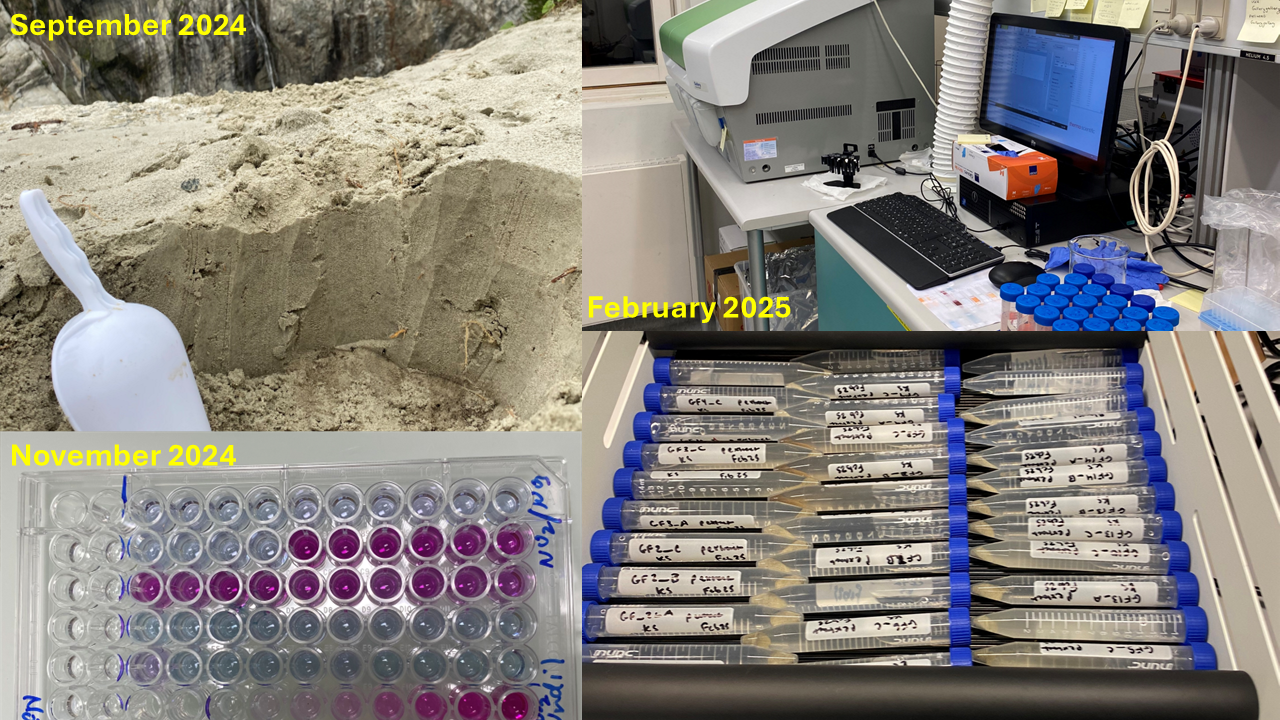
DC9 KARA SAMPSELL: September 2024 - February 2025
Month 13: In September, I completed DNA extraction for all of the samples from the microcosm experiment and began library preparation for 16S rRNA gene amplicon sequencing for the whole sample set. I collected large quantities of glacial flour from the hydroelectric intake at Agentiere to be used in a plant experiment. I worked on troubleshooting the library preparation process.
In October, I attended the BiotechX conference along with my supervisor and lab mates. I also attended our third network-wide training week in Copenhagen. Once back in the lab in Grenoble, I continued troubleshooting the library preparation process.
In November, I continued troubleshooting the library preparation process. I measured also extracted and inorganic nitrogen contents from baseline and endpoint of the microcosm experiment. I began investigating how we might sterilize glacial flour for the plant experiment.
I continued troubleshooting the library preparation process in December. I completed qPCRs to quantify bacterial abundance over time from all the microcosm samples.
I began January with writing a small contribution for a project deliverable led by Silje. Library preparation for 16S rRNA gene amplicon sequencing was successful, and we launched the sequencing run at the end of the month in Lyon. I collected soil for the plant experiment from agricultural fields near Lyon and began preparing it in the research greenhouse. I gave a talk about my PhD project at an interdisciplinary meeting held between institutes at our university.
Month 18: In February, I completed the first part of my secondment with a two week stay in Denmark to perform extractions and measurements of silica, iron, and phosphorus from the glacial flour samples alongside Klara. I completed preparation of the soil for the potted plant experiment. I completed the grinding and preparation process for XRD analysis of the glacial flours. I began working with Dr. Roberto Grilli at IGE on the measurement set up and plan for performing nitrous oxide and methane measurements from a set of microcosms that I had saved from the 2024 experiment.

DC2 HARPREET SINGH: September 2024 - February 2025
Month 13 (September 2024): We started analysing our data for the winter samples to address the questions related to microbial activity during the winter. Specifically targeting samples from Svalbard where winters are dark and very cold. And our interest lies on understanding which microorganisms are found in such conditions and what activities are sustaining their community.
October 2024: Meanwhile we are also trying to refine our research questions. Given the risks of sampling during winters in arctic, there is a huge gap of information regarding microbial population and their processes. Hence, we will start with a broader evaluation of our samples and then proceed with more specific questions. We also attended the BiotechX Europe conference which was focussed on Advancements of AI in biotechnological industries and it consisted on several talks on AI and demonstrations by Industrial giants and startups. We had our ICEBIO network meeting in Copenhagen where we discussed our research ideas and explored the science and policies related to environmental health and its monitoring. We were introduced to white paper and methods to connect the science with general public and policy makers.
November 2024: We started preparing the libraries for RNA from the winter samples for sequencing. We planned for total RNA sequencing to cover both the ribosomal RNA and the transcripts of messenger RNA. Since our focus is microbial activity during winter, we are planning to relate the rRNA content with level of activity and the mRNA for functions. We also had a visit from the team of Dr. James W Bradley, who works on microbial dormancy in snow and ice. He also provided his help during the sampling session in Svalbard. We had our brain boosting session on the basics of microbial dormancy and how it promotes the survival of microorganisms.
Month 16 (Decembe 2024): We sequenced our RNA for the winter samples. We continued with the analyses of our DNA and RNA data. Meanwhile we had regular meetings to refine our objectives and questions. We are targeting our first article to explain about the microbial population and their possible activities during the polar winter of arctic. The idea is to create a base of information by keeping our objectives broader and then based on our observation we will target the specific questions and study it in more details.
January 2025: We continued with the analyses of our DNA and RNA data. Meanwhile we had regular meetings to refine our objectives and questions. We are targeting our first article to explain about the microbial population and their possible activities during the polar winter of arctic. The idea is to create a base of information by keeping our objectives broader and then based on our observation we will target the specific questions and study it in more details. We also had a Bio-Geo-Clim workshop hosted in Grenoble with an initiative to increase interdisciplinary connections and provide a platform for people to learn and develop ideas from different field of studies which might connect or support with their own information and it was really helpful to have a different perspective.
Month 18 (February 2025 : We are trying to compile our article as soon as possible. We are in process to compile our data and connect all the information together.
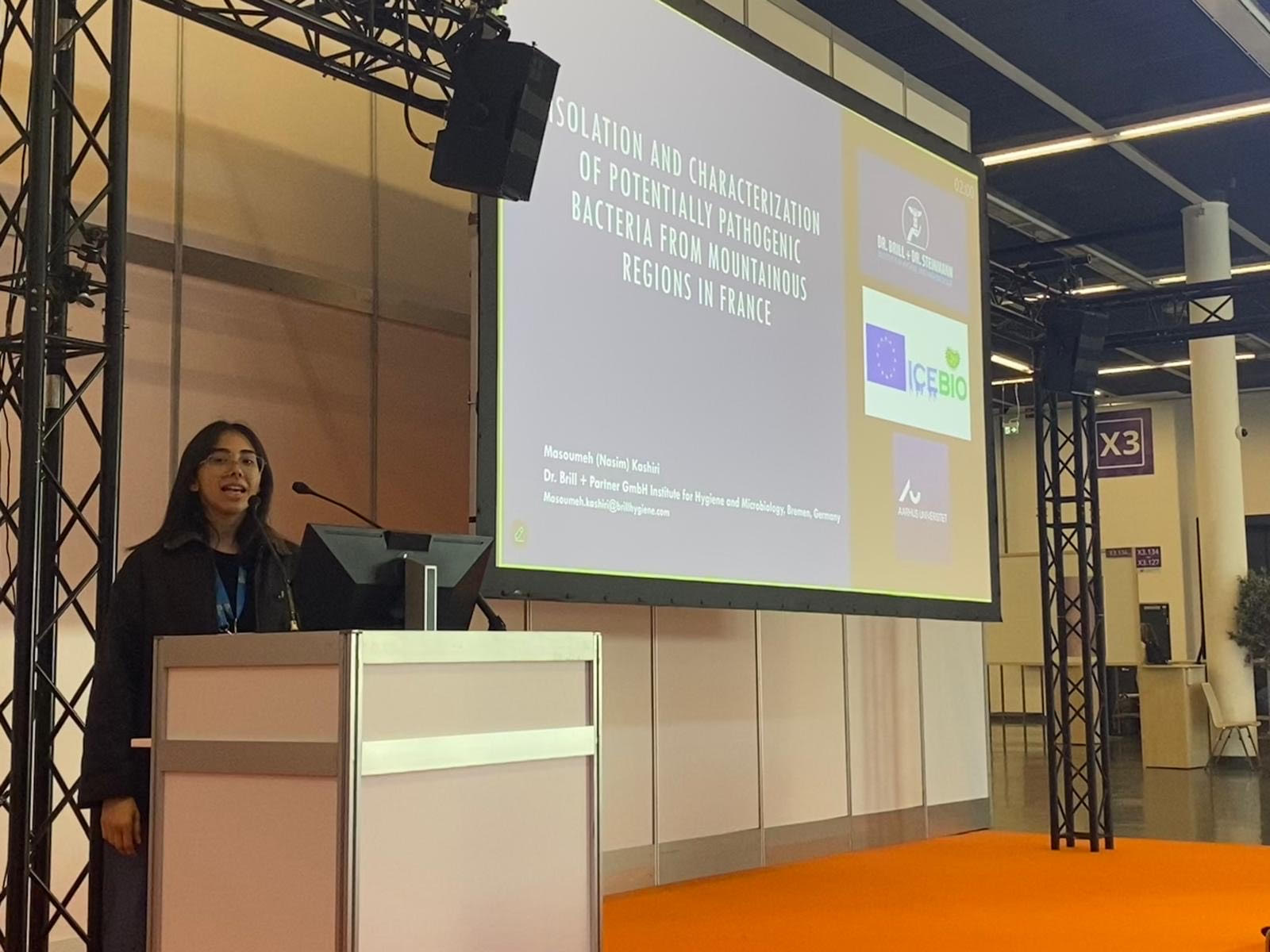
DC2 NASIM KASHIRI: NOV 2024 - APRIL 2025
Month 13 (November): I attended the second-year Study Week organized by Paracelsus Medical University, which provided an excellent opportunity to connect with other researchers in the program. Next, I traveled to Hamburg to participate in a science meeting hosted by Brill Company, which was held in conjunction with the 10th Conference of Applied Hygiene, Microbiology, and Virology. These events allowed me to gain valuable insights into current research directions and practical challenges in microbiology and hygiene-related fields.
Month 14 (December): I focused heavily on lab work. I conducted hemolytic tests on various bacterial isolates using different types of blood agar plates. Additionally, I began culturing environmental samples that had been collected directly from the Stubai glaciers (without filtration). These samples were grown on media supplemented with different concentrations of antifungals, aiming to reduce fungal overgrowth and improve bacterial isolation outcomes.
Month 15 (January): I successfully isolated a wide range of microorganisms from the previously cultured samples. These were subsequently sub-cultured multiple times to obtain pure colonies. Following this, I extracted DNA from the isolates and carried out PCR to prepare them for further genetic analysis. At the same time, I completed all the assignments from the university’s study week.
Month 16 (February): I finalized the PCR work by purifying the products from all isolates and sending them for Sanger sequencing. I was also involved in an outreach activity. I hosted a group of university students visiting the company, guided them through different sections, presented my research project and led an engaging discussion about the challenges involved in environmental microbiology. After this period, I took a two-week holiday.
Month 17 (March): I returned from my break and shifted focus toward antibiotic resistance research. I began with literature review to inform the next phase of experiments and then selected and purchased the necessary antibiotics for susceptibility testing. With the materials prepared, I carried out disc diffusion assays to evaluate the resistance profiles of my isolates. At the same time, I also began writing the first draft of my first scientific paper.
Month 18 (April): I further investigated the physiology of recently identified isolates. I examined their temperature tolerance and assessed hemolytic activity to deepen the phenotypic characterization. Moreover, I integrated OD measurement with CFU counting to improve the reliability and robustness of my previous results. I also attended several online courses offered by the university. Toward the end of the month, I prepared for participation in the EGU Conference held in Vienna, Austria.
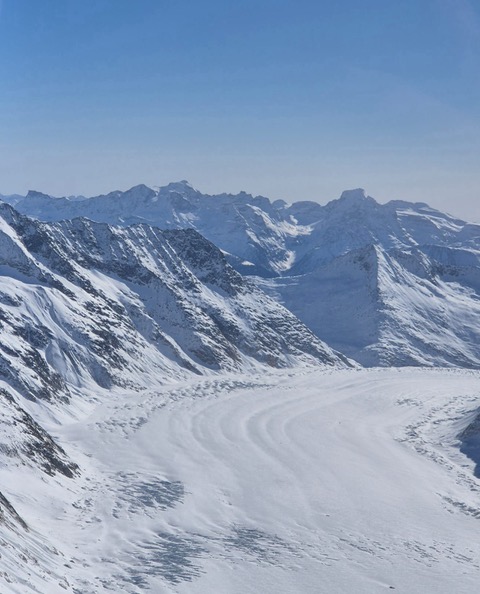
DC2 LEA FRANCOMME: November 2024 - April 2025
Month 13 (November): I conducted the Autumn 2024 sampling campaign across several glacier-fed streams in Valais, Switzerland. Once done with fieldwork, I extracted DNA from my samples and initiated library preparation for 16S full length sequencing.
Month 14 (December): Due to the Christmas break, December was a short month during which I completed the sequencing of my samples and initiated data analysis using several bioinformatics tools.
Month 15 (January): I attended a 3-week intensive course about Next Generation Sequencing analysis from DTU, Denmark and pursued data analysis of the samples sequenced in December.
Month 16 (February): February was dedicated to the last sampling campaign of my PhD as well as the initiation of high molecular weight DNA extraction of H. foetidus for further whole genome sequencing. I also spent time analysing the microbial community data I obtained for Winter 2024 and Autumn 2024 in order to present the results during a poster session at EPFL.
Month 17 (March): I pursued my work on the high molecular weight DNA extraction of H. foetidus to prepare the material for my secondment at Aarhus Universitet and initiated labwork from the samples collected in February 2025 for the chapter about the microbial community associated with Hydrurus foetidus.
Month 18 (April): April was dedicated to pursuing the labwork on winter 2025 samples for the microbial community associated to Hydrurus foetidus. Once DNA was extracted, sequencing libraries were prepared and sequenced. I also participated to the Science Promotion Day at EPFL Valais, to introduce biology and microorganisms to young children.

